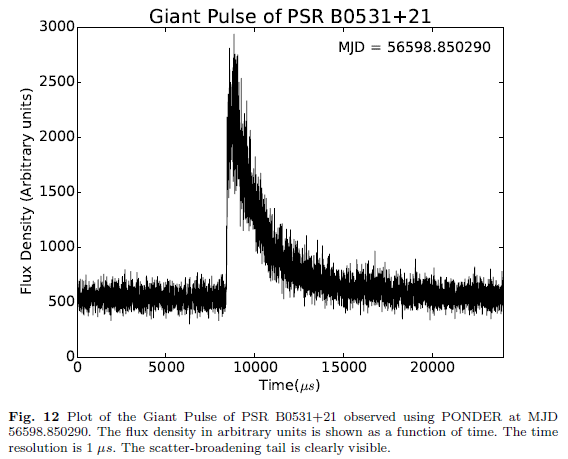Arun Naidu, B.C Joshi, P.K Manoharan, M.A Krishnakumar 2015
http://arxiv.org/abs/1503.01405
31 references:
http://adsabs.harvard.edu/cgi-bin/nph-ref_query?bibcode=2015ExA....39..319N&refs=REFERENCES&db_key=AST
Abastract: "This paper describes a new real-time versatile backend, the Pulsar Ooty Radio Telescope New Digital Efficient Receiver (PONDER), which has been designed to operate along with the legacy analog system of the Ooty Radio Telescope (ORT). PONDER makes use of the current state of the art computing hardware, a Graphical Processing Unit (GPU) and sufficiently large disk storage to support high time resolution real-time data of pulsar observations, obtained by coherent dedispersion over a bandpass of 16 MHz. Four different modes for pulsar observations are implemented in PONDER to provide standard reduced data products, such as time-stamped integrated profiles and dedispersed time series, allowing faster avenues to scientific results for a variety of pulsar studies. Additionally, PONDER also supports general modes of interplanetary scintillation (IPS) measurements and very long baseline interferometry data recording. The IPS mode yields a single polarisation correlated time series of solar wind scintillation over a bandwidth of about four times larger (16 MHz) than that of the legacy system as well as its fluctuation spectrum with high temporal and frequency resolutions. The key point is that all the above modes operate in real time. This paper presents the design aspects of PONDER and outlines the design methodology for future similar backends. It also explains the principal operations of PONDER, illustrates its capabilities for a variety of pulsar and IPS observations and demonstrates its usefulness for a variety of astrophysical studies using the high sensitivity of the ORT"
...o...











